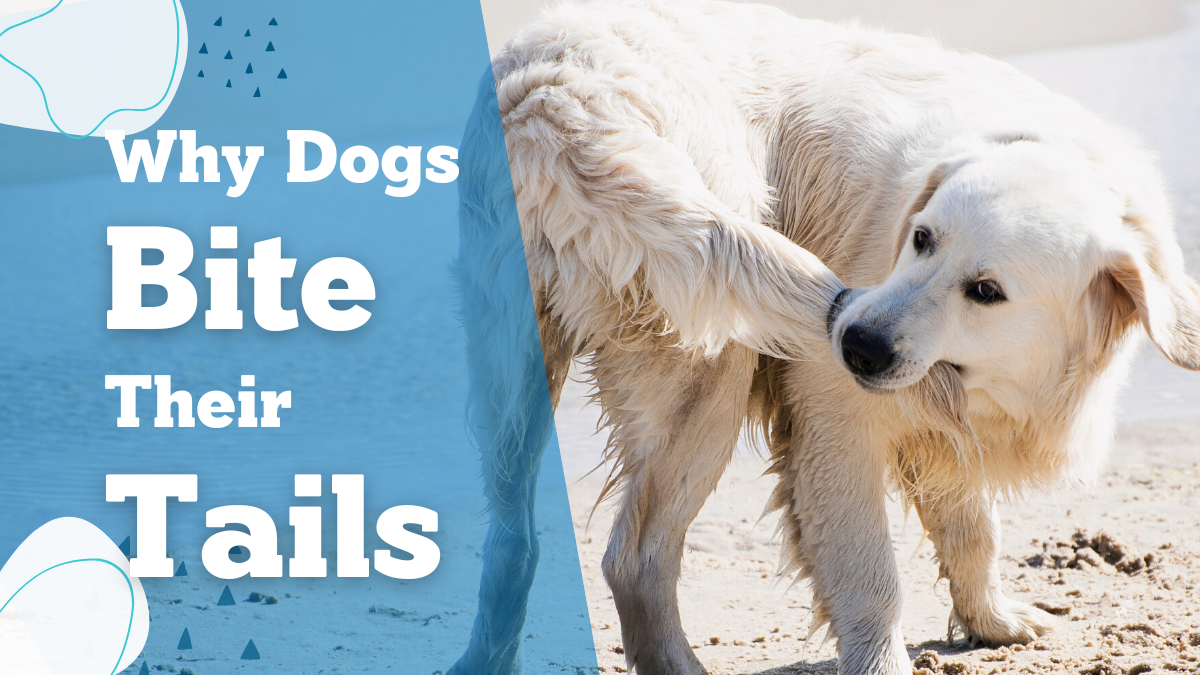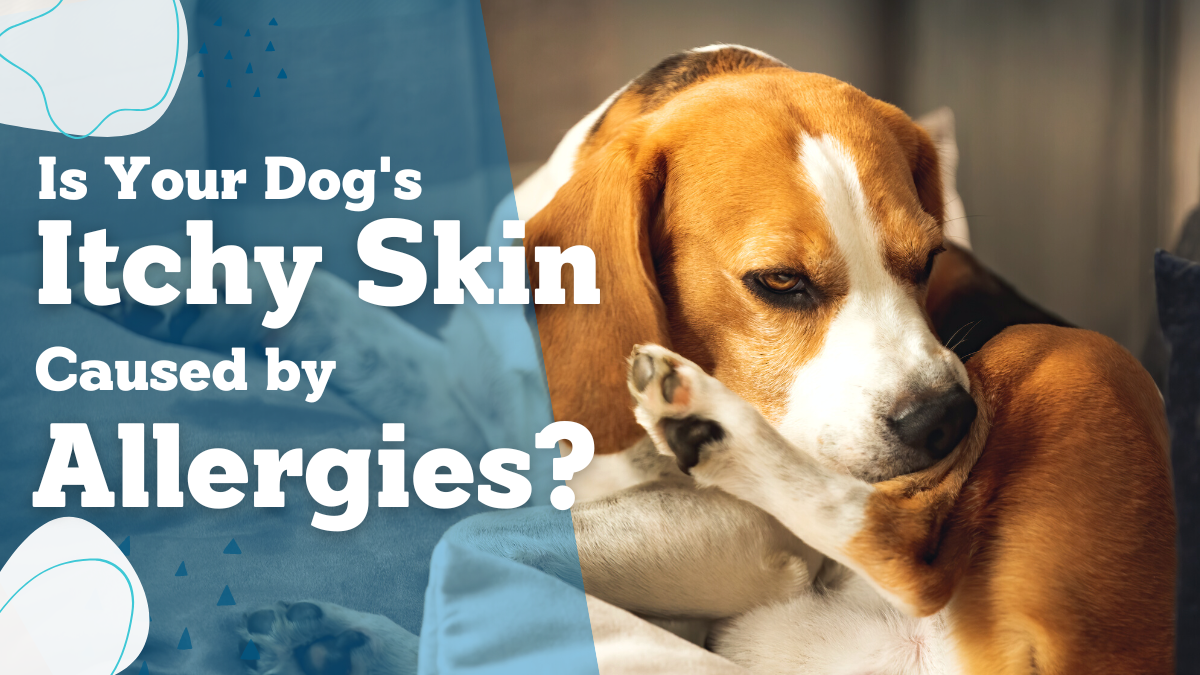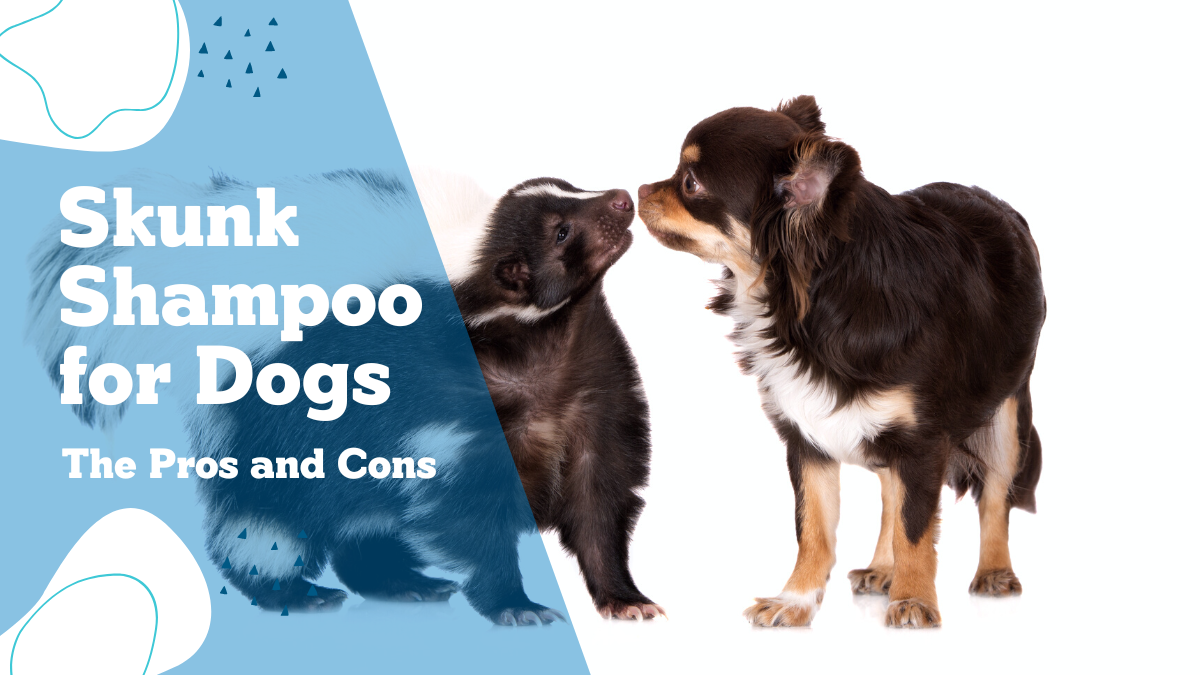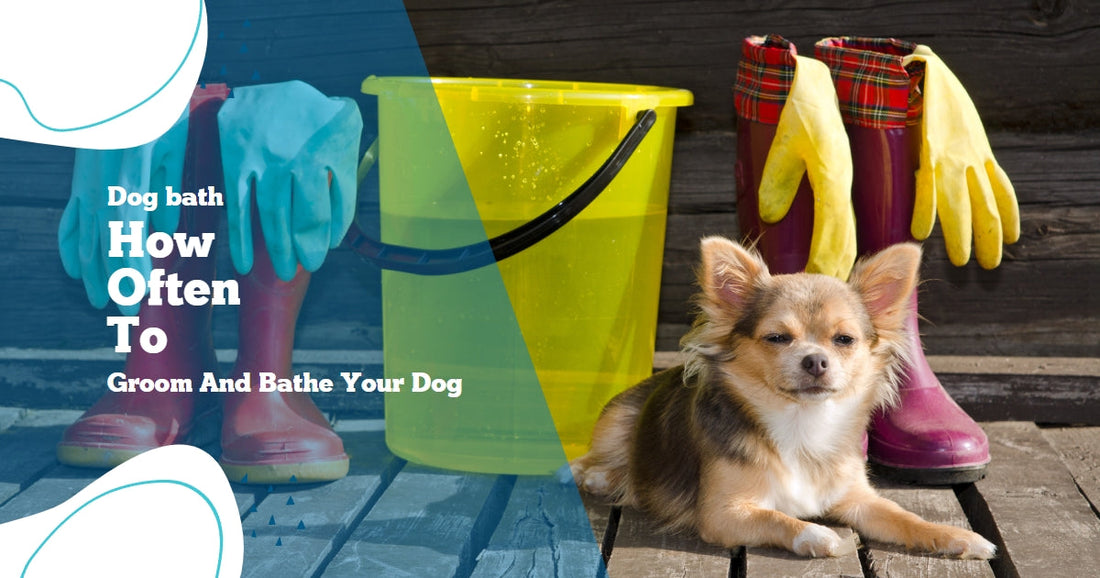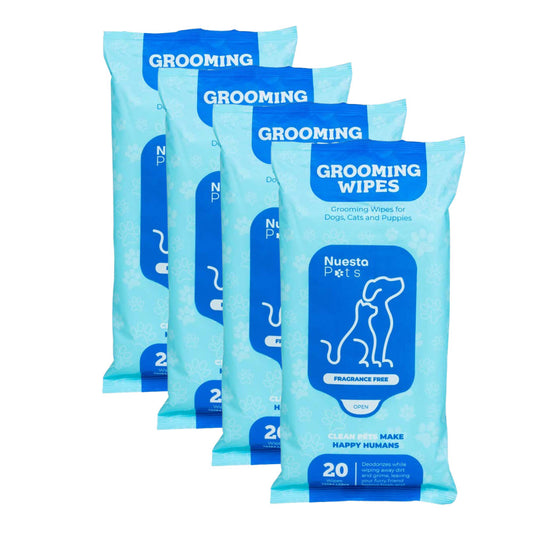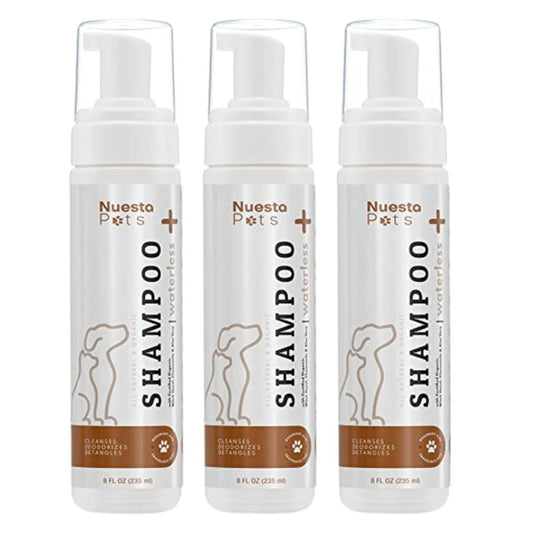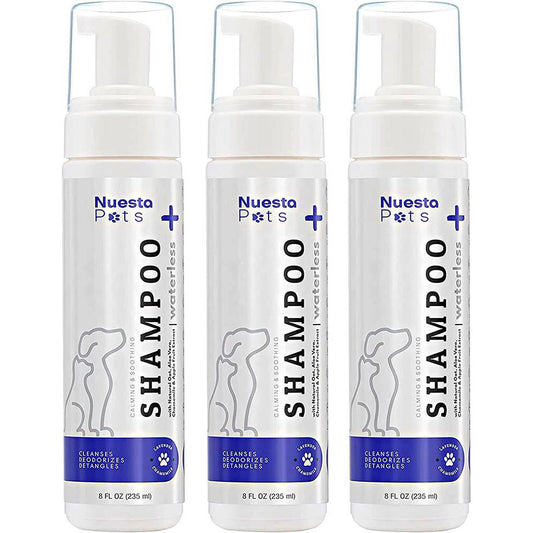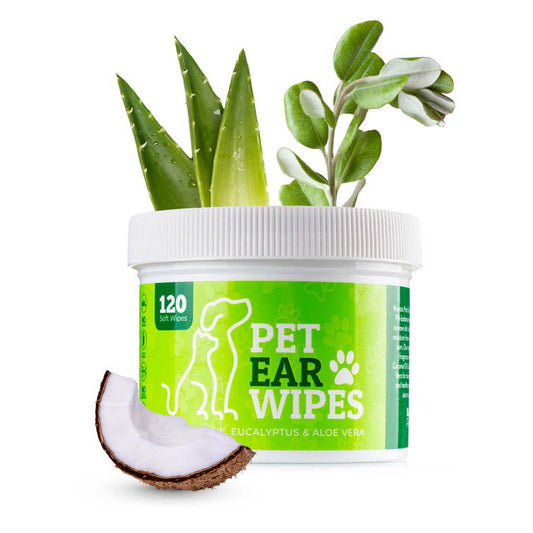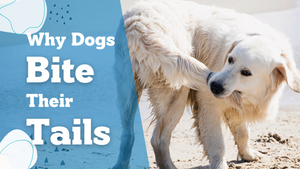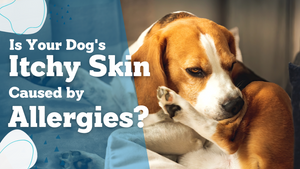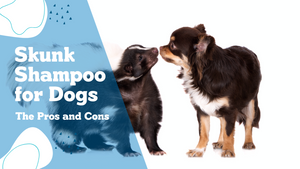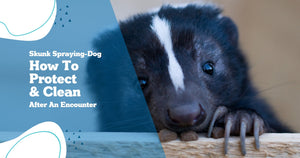Dogs are known as "man's best friend" for a reason. They provide companionship, love, and loyalty through thick and thin. But one thing that can really put a damper on the relationship is when your dog isn't clean. A dirty dog can be smelly, messy, and just generally unpleasant for the pet parents and their pup. Luckily, there are a few simple things you can do to keep your dog so fresh and so clean!
Dog bath - How often should pet parents bathe their dogs?
There are a lot of opinions out there about how often you should bathe dogs. Some people say that more frequent bathing will strip the natural oils from their skin and coat, while others say that not bathing your dog often enough can cause them to become stinky and dirty. So what's the right answer?
The truth is, there is no one-size-fits-all answer to this question. It depends on a number of factors, including your dog's breed, coat type, activity level, and skin conditions. Generally speaking, however, most dogs benefit from regular baths every two to three months.
If they have a short coat or are low-shedding, you may only need to bathe them every few months. If your dog has a long coat length or a double coat, however, you may need to bathe them more frequently. Active dogs who play outside a lot may also require more frequent baths, as they are more likely to get dirty and smelly.
If you're not sure how often you should be bathing your dog, talk to your veterinarian. They can help you determine a bath schedule that's right for your dog's lifestyle.
Tips for dog owners if your dog hates baths
If you have a dog that hates baths, you're not alone. Many dogs find the experience of being bathed unpleasant, and some will even go so far as to try and avoid it altogether. Fortunately, there are a few things you can do to make bath time less stressful for both of you.
1) Start early:
If you have a new puppy, start getting them used to baths from an early age. This will help them to associate baths with positive experiences, instead of something to be afraid of.
2) Go slowly:
When you do give your dog a bath, take things slowly at first. Allow them to get used to the water and the sensation of being wet before moving on to anything else.
3) Make it fun:
Add some toys to the bathtub and reward with treats to make it a more enjoyable experience for your dog. This will help them to relax and have fun, instead of feeling scared or anxious.
4) Be patient:
If your dog is still resistant to baths, be patient and keep trying. With time and patience, most dogs will come to accept baths as a normal part of their routine.
If you're struggling to get your dog to take a bath, take our bath-time quiz for additional tips and tricks, along with a free dog bathing guide!

The best way to bathe your dog
Bathing your dog is one of the most important parts of grooming. There are many ways to bathe your dog, but not all of them are effective or safe.
The best way to bathe your dog is by using a tub or sink and using shampoo specifically made for dogs. This will ensure that your dog is clean and free of any harmful chemicals.
Make sure to rinse your dog thoroughly after bathing to remove all the soap. Towel drying your dog off is also important to avoid any health risks associated with wet fur. Finally, make sure to brush your dog's coat after they are dry to remove any knots or tangles insuring a healthy coat.
How to pick the right shampoo for your dog's skin
There are a few things to consider when picking the right shampoo for your dog. Human shampoos can be too harsh for dogs and can cause skin irritation.
What are the ingredients to look for in dog shampoo? Choosing shampoos with natural components like oatmeal, aloe vera, herbal proteins, and vitamins is a good rule of thumb.
Also, consider your dog's skin type. If your dog has sensitive skin, underlying skin conditions, or health conditions you will want to use a dog shampoo that is designed for sensitive skin or a medicated shampoo.
Nuesta Pets' unscented, fragrance-free shampoo will put you at ease knowing that it is safe for your pet with sensitive skin. Helps relieve itchy, dry skin while leaving your pet clean, shiny, and silky smooth.
The fragrance-free formula features only the highest quality ingredients. Non-toxic and pH balanced keeping your dog's skin & coat clean and healthy!

How often to clean your dog's ears
In general, once a month is a good target. Dogs with big, floppy ears or that swim frequently may need their ears cleaned every other week or even more often. After bathing or swimming make sure your dog's ears are fully dry.
Dogs are prone to ear infections, and cleaning their ears regularly is one of the best ways to prevent them. Here is a simple guide on how to clean your dog's ears.
Step 1: Gather your supplies.
You will need a bowl of warm water, some cotton balls, a towel, and a vet-recommended dog-ear-cleaning-solution.
Step 2: Put your dog in a comfortable position.
You may need to have someone help you hold your dog still, depending on their size and temperament.
Step 3: Pre-rinse
Soaking a cotton ball in the warm water, and then gently wiping the inside of your dog's ear. Be careful not to go too deep into the ear canal.
Step 4: Dry
Dry the inside of your dog's ear with a clean towel or Nuesta Pets Ear Wipes
Step 5: Medicate
To clean your dog's ear, fill it with a veterinarian-approved ear-cleaning solution and massage gently at the base of the ear for about 30 seconds. You should hear a squishing noise as the product dislodges gunk and build-up from the canal.
Use a cotton ball or Nuesta Pets Ear Wipes on the outside of their ear to remove any debris and repeat as needed until the cotton ball comes out clean.
Step 6: Dry
Allow your dog to shake their head, and then dry their ear with a tissue.
Step 7: Repeat
Repeat this process monthly, or as needed. Dogs with floppy ears or that swim often may need their ears cleaned more often than once a month.

How often to clean your dog's teeth
It's also important to brush your dog's teeth at least twice a day, just like it is for you. Once brushing becomes a part of their daily routine, many dogs discover that it is something they look forward to. To assist remove plaque and preventing tartar build-up, Brushing at least three times each week is advised.
Dogs are just like people in that they need to have their teeth cleaned regularly in order to maintain good oral health. Just like with humans, if you don't clean your dog's teeth, plaque will build up and can affect your pet's health down the line, may cause tooth decay, gum disease, and even heart problems.
But dog owners shouldn't stress!! Cleaning your dog's teeth is relatively easy to do and only takes a few minutes each day. The most important thing is to be consistent with it so that your dog gets used to it and doesn't fight you when you try to do it.
Here's a quick guide on how to clean your dog's teeth:
- Start by getting your dog used to you handling their mouth. Put your hand in their mouth and gently rub their teeth and gums. Do this for a few days until they are comfortable with it.
- Once your dog is comfortable with you handling their mouth, you can start introducing a toothbrush made for dogs. Put some toothpaste made for dogs on the toothbrush (human toothpaste may hurt their stomach due to certain ingredients) and let your dog lick it off. Do this for a few days until they are comfortable with the taste.
- When your dog is comfortable with the toothbrush, you can start brushing their teeth. Use gentle circular motions and be sure to brush all of the surfaces of their teeth. Do this for two minutes, twice a day.
- Finally, give your dog something to chew on after you brush their teeth. This will help remove any plaque that was missed and will also serve as a reward for being such a good patient!
How often to groom your dog's coat
A haircut can last a dog two to three months, but if the groomer leaves more than an inch of fur on your pooch after shaving him, it's best to get your dog groomed every four to six weeks to prevent matting. This goes for curly and wavy coat dogs, too.
Grooming care is necessary to have a healthy pup, clean, and looking their best. Grooming also helps to prevent mats from forming in the dog's hair, which can lead to skin problems.
There are several different ways to groom your dog, depending on the type of coat he has.
You can use a brush, comb, or special grooming tools to remove loose hair, dirt, and debris from your dog's coat. For dogs with longer coats, you may also need to trim the hair using scissors or clippers.
Coat health is important and if you're not sure how to groom your dog properly, you can always take him to a professional groomer for help. Professional groomers have the knowledge and experience necessary to safely and effectively groom all types of dogs.

How often to trim your dog's nails
Clipping your dog's nails on a regular basis, about every 3-4 weeks, is necessary but it should be done as often as needed to keep the nail from touching the ground when your dog is standing.
Dogs need their nails trimmed regularly, or they can develop problems with their feet.
There are a few different ways to trim your dog's nails. The most common way is to use clippers. You can find these at most pet stores. There are also electric nail trimmers that work well. If you are not comfortable using either of these, you can take your dog to a groomer or vet to have the nails done professionally.
When trimming your dog's nails, it is important to avoid the quick. This is the blood vessel that runs through the nail. If you cut this, it will bleed and be painful for your dog. You can avoid cutting the quick by only trimming a small amount off the tip of the nail.
If your dog's nails are very long, you may need to trim them back in stages. Start by trimming a little bit off and then letting your dog get used to the new length. Once they are comfortable, you can trim a little bit more. Repeat this process until the nails are at a comfortable length.
If you have never trimmed your dog's nails before, it is best to get some help from a professional. They can show you how to do it properly and help you avoid any mistakes.
Keeping your dog clean is essential for their health and well-being. Not only will it keep them looking good, but it will also help to prevent skin infections, parasites, and other health problems. In this article we’ve outlined the different ways (and how often!) to keep your dog clean, following these tips will keep you and your fur baby happy!
Share:

